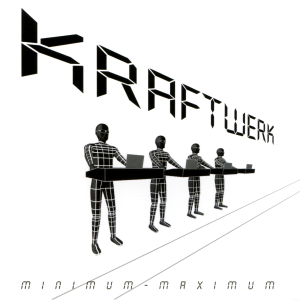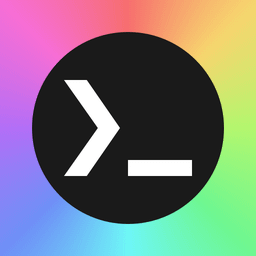

Where’d you get the OneShot Firefox icon?
Here to follow content related to Star Trek, Linux, open-source software, and anything else I like that happens to have a substantial Lemmy community for it.
Main fediverse account: @f00fc7c8@woem.space


Where’d you get the OneShot Firefox icon?


I’ll probably use Codeberg or another Forgejo server for my next programming project, if/when I have one that is far enough along to publish (motivating myself to get that far is a tall task). Until then, everything I’d consider contributing to is either on GitHub, or is self-hosting some other software, so I don’t have a reason to create an account yet.


I’ve switched to FreeTube for now, it still works using the Invidious API. This is happening because YouTube is testing forced login to watch videos or use the API. There is a workaround it seems, but we’ll have to wait for all the major clients to roll it out.


The website claims that sponsors have no direct influence on the project (“board seats are not for sale”). The reality is that no project of sufficient scale to fully implement web standards can survive without a significant amount of funding.


Depends on your desktop environment. Look for an “autostart” or “startup applications” setting. If you’re on KDE, this could also be caused by “Restore previous session” under Settings -> Startup and Shutdown -> Desktop Session.


I always keep close track of these contests, it’s fun to take a look at all the different concepts. Though IIRC only Juliette Taka (who designed the themes for 8, 9, and 11) even submitted a theme last time. She’s great, and Emerald is great, but I hope this post gets someone even better involved with the artwork.


Debian! It’s stable, elegant, and doesn’t impede customization. I distro-hopped a lot over the years - some that I ended up disliking included KaOS (severely limited software repository), Clear Linux (only way to get ffmpeg was to compile it from source) and Fedora (very slow); most I liked, and just decided to move on at some point. But I kept coming back to Debian, and eventually got to a point where instead of trying a different distro when Debian broke, I would just reinstall Debian.
I’d be interested to try VanillaOS or another “immutable” distro at some point in the future. See if they’ve matured enough for my day-to-day use.


I was quite satisfied with Debian Stable for a few years on at least two different laptops, and felt I had found my “forever distro”, until I got a Framework laptop whose AMD graphics were quite buggy on it. In order to get rid of all the issues, I had to upgrade to Testing and install a mainline Liquorix kernel (and along the way, I briefly made a Frankendebian and fiddled with kernel parameters). While my years of experience with Debian and derivatives has prevented me from breaking anything, I do wish I didn’t have to use all of this beta-quality software just to prevent games from freezing and crashing constantly, just because I bought “new” (about a year old) hardware.
I still want to keep Debian, because I’ve found nothing else that works quite as elegantly or stably, but I’m hoping to find ways to get the performance I need without Liquorix, and if something forces me to reinstall between now and the time Debian Trixie becomes stable, I’ll probably give Fedora or KDE Neon another try.


Not sure why, but a lot of other distros did something just like this in the past (see the comments about WUBI) and no longer do. Q4OS still has a .exe installer though.




I have to borrow a school laptop just to do proctored exams, because their “lockdown browser” doesn’t support Linux, and even if it did, it seems to do some things in kernel mode, so I don’t want it on my system.
Surprisingly, most classes at my university are entirely FOSS based, aside from that one piece of software, an obscure scientific program that only one assignment used, and MATLAB (which is easily replaced by GNU Octave.)


Unfortunately, the state of Android music players is not great. Currently I have two FOSS music players installed: Metro Music Player (the F-Droid version of Retro Music Player) and mucke. mucke has a ton of really cool features that improve the shuffle experience but it’s actually worse than most apps at pulling album art. Retro/Metro has beautiful UI, and has pretty good features for customization, but lacks the cool features mucke has and is less stable. Both have more than one annoying bug, but it took me a while to find music players that had this few dealbreakers.


I really liked the simplicity of GNOME To Do when it was around. The successor seems to be GNOME Endeavor, which I haven’t tried extensively.

I suspect Plasma 6 will remove it. Though I’m liking this desktop setup so much I might just keep it for the rest of Debian Bookworm’s lifespan.

this is my “gaming” Plasma activity, so in theory everything I play regularly is there :)
i’m personally fine with the windows being slightly brighter, but i think an almost-black theme would look good too… might experiment with that, thanks for the suggestion!

Me too, but I also think it just looks cool. Sci-fi vibes.


oh it is still being updated! great.
I’d say they all offer different types of customization. It’s less a matter of how much you can do, and more a matter of what you want to do and how much time you’re willing to spend working on it. KDE is for people who want to customize their desktop, and want it to be easy to do so. GNOME is for people who just want something that works, but it still offers a lot of customization, it’s just not as well-supported (their philosophy is “if theming breaks an app, it’s not our fault”).
KDE doesn’t support full CSS customization on its own, but there are theming engines like Kvantum and QtCurve that address the limitations that arise from this. I’d say it’s on almost equal footing with GNOME in that regard, since both GTK4+libadwaita and Qt6+KF6 are designed for color scheme customization, but require various workarounds and obscure settings for anything more than that. If anything the workarounds are easier in KDE.
Similarly, KDE supports layout customization through widgets and graphical menus. GNOME also supports layout customization, but through extensions instead.
And then you can do all of the above and more if you use a window manager, or an LXDE/LXQt-style desktop that lets you disable or replace all its components in settings - just mix and match components like panels, file managers, display managers, polkit agents, etc. You can basically build your own DE that way, and it doesn’t get much more customizable than that. But maybe you don’t want to spend your time choosing every component of your custom DE. That’s what something like KDE is for.